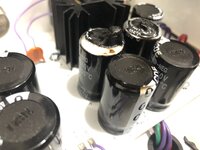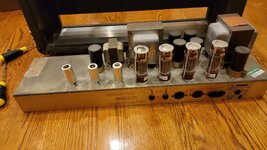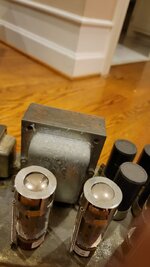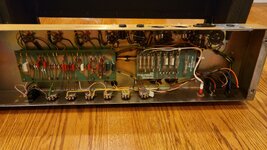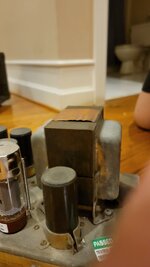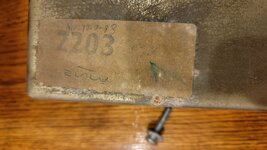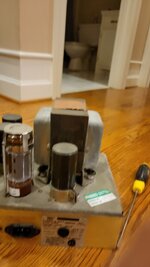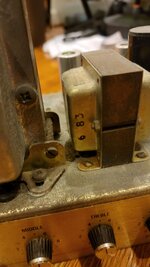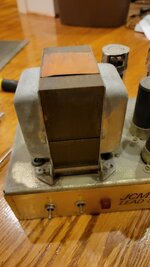This comment has nothing to do with this amp, but is intended to shed some light on the subject of electrolytic capacitors - and to diplomatically lead the battle between glpg80 and Racerxratet to a peaceful solution.
In principle, every EE learns during their training that electrolytics (depending on the country and the applicable VDE, RU, CSA, etc. regulations) must be replaced after 10, 15 or 20 years. In addition, new Electrolytics may only be installed if they have not yet exceeded a storage age of 5 years.
These are the basics in school, training and that's what the textbooks say - just like you should throw away a can of beans after the expiry date has passed, although the contents could still be enjoyed for a few years longer without any problems.
That's just the theory - but now to practice (electrolytics, not beans

)
The Erie electrolytics could be critical due to its age of meanwhile 55-60 years and should therefore be carefully checked for capacitance, ESR and leakage current (which requires unsoldering the positive contact and inserting a mA meter) after a gentle discharge.
The later Daly and especially the even later LCR electrolytics have (contrary to the laws of physics) an apparently (almost) unlimited life span.
However, this only applies if the amp has NEVER been out of use for more than half a year since it was first fired up as a new amp.
Unused electrolytics gradually deform, which, to put it in understandable terms, means that the oxide layer, which acts as the only insulator between the two aluminum foils in an electrolytics gradually dissolves, is dissolved by the electrolyte - and thus both foils come into electrical contact with each other. This process begins gradually after about 6 months without any voltage being applied and is completed after 2-3 years at the latest.
Now, when someone finds an old Marshall in a friend's basement or attic that hasn't been used in several years, they are at first delighted and can't wait to fire it up and hear the old sweetheart - but the joy is there usually only short and is abruptly ended by an ugly crash, followed by a massive hummmmm. One or more electrolytics have died due to a internal short and in the worst case even burst or explode.
In order to avoid this, you MUST form the electrolytics of an old amplifier that has not been in use for more than 6 months before switching it on again for the first time, so that the insulating oxide layer on the internal aluminum foil, which has since dissolved can form again.
I described how this works with Marshall amps almost exactly 16 years ago here:
http://forum.metropoulos.net/viewtopic.php?p=81922
Btw - I still use good old NOS LCR electrolytics for my new builds, which were produced in 1993 & 1994 and of which I had bought plenty of them in good time before the end of production.
Of course I have to form these electrolytics, which is a 36-48 hour process before I start my newly built DINO, British Purist, Rock Wizard or Pure Metal Machine with the tubes applied for the first time - but...
... I haven't had a single 'old' LCR of my newly built amps fail due to a defect - and my DINOs in particular are sometimes used live up to 150 shows a year for several hours each


